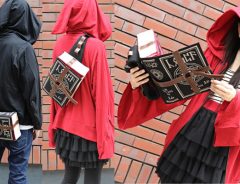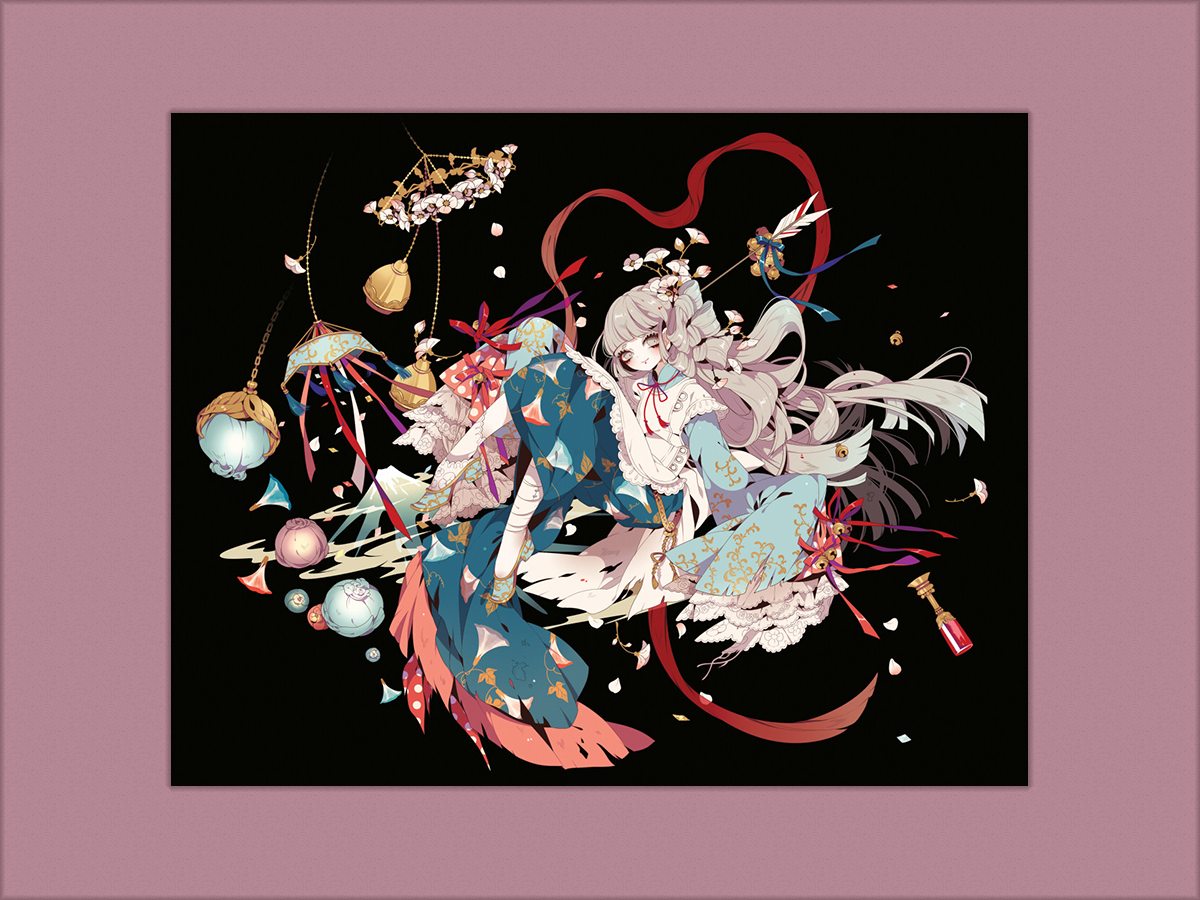- Source:
- © Shikimi
- Tags:
- Design / Fashion / Illustration / japanese illustrator / Shikimi
Related Article
-

Slick Lupin The Third Suits And Other Novelty Goods Now Available For The Manga’s 50th Anniversary
-

Origami inspired pet houses will give your furry friend a stylish abode
-

Artist “E wo kaku Peter” Imagines New Technologies Injected Into Objects From Japan’s Recent Past
-

New Naaan bread clocks made from real bread take inspiration from Dali and a Japanese pun
-

Japanese Artist’s Tricky 3D Anime Character Illustrations Are Too Good To Believe
-

These Spellbook Book Bags Will Have You Unleashing Sorcery In Style



Some of our readers may recall Shikimi's designs from our article on the latest Yuru-Hakama loungewear series (now enjoying a wildly successful crowdfunding campaign on Campfire Creations):
With permission from © Shikimi
A Tokyo-based illustrator with a broad fan base, Shikimi combines a refined sensibility for fashion and design, an ability to create striking compositions, and an an eye for detail and aesthetic balance, resulting in exquisite and detailed tableaus centered on characters. The patterns in the beautiful clothing and the objects chosen in each composition are often imbued with symbolism, maintaining the viewer's interest well beyond the first glance. Although mainly engaged with the visual culture and literature of Japan, Shikimi also draws inspiration from other parts of Asia, Europe and beyond. The illustrations often address the delicate balance between life and death, fantasy and reality.
Known for designing characters of famous online games such as Touken Ranbu, Shikimi also shines in print media, creating many gorgeous book covers. Shikimi's publications include a book of illustrations from Ichijinsha called 『獏の国』 Baku no Kuni ("World of the Tapir"), and more recently, several volumes of Rittorsha's Otome no Hondana 乙女の本棚 (A Maiden's Bookshelf) series which combine color illustrations with famous works of modern Japanese literature. Shikimi's illustrations are featured in Sakutaro Hagiwara's 『猫町』Neko no machi ("Cat Town"), Rampo Edogawa's 『押絵と旅する男』Oshie to tabi suru otoko ("The Traveler with The Pasted Rag Picture"), Soseki Natsume's 『夢十夜』Yume juya ("Ten Nights of Dreams") and, coming out on December 19th (see Shikimi's promotional Tweet below), Ango Sakaguchi's 『桜の森の満開の下』 Sakura no mori no mankai no shita ("In The Forest, Under Cherries in Full Bloom").
In addition to collaboration with fashion brands, Shikimi also contributes artwork for Vocaloid producers and other musicians for their promotional videos, and designs tickets and goods for various performances and events.
Selection of Illustrations
With Shikimi's gracious permission, we have reproduced a few illustrations here for your enjoyment.
Please click or tap on the images below to view them in larger size. To view the works in their original format on Shikimi's website, please click on the Japanese title in the captions below each image.
Reversi(2015)| With permission from © Shikimi
芙蓉峰 fuyōhō (Mount. Fuji)(2013)| With permission from © Shikimi
うさぎの嫁入り(2014)usagi no yomeiri (The rabbit's wedding)| With permission from © Shikimi
花嫁道中の惨劇(2015)hanayome dōchū no sangeki (Tragedy during the bridal procession)| With permission from © Shikimi
Considering the "bridal procession" in the title, and the fox figure in traditional Shinto bridal wear, one source of inspiration is probably kitsune no yomeiri, which either refers to atmospheric ghost lights, a phenomenon during which it appears as if paper lanterns from a wedding procession are floating through the dark, otherwise known as a sunshower, or various strange wedding processions that can be seen in classical Japanese kaidan, essays, and legends. In some of the stories, the wedding is between a human and a fox which has shapeshifted into a human.
死人に口なし(2013)shinin ni kuchi nashi (Dead {wo}men tell no tales)| With permission from © Shikimi
夏に死ぬもの(2014)natsu ni shinu mono (That which dies in summer)| With permission from © Shikimi
One of the popular entertainments at summer festivals and ennichi fairs in Japan is 金魚すくい kingyo sukui, a game in which goldfish scooped from a basin can be taken home in plastic bags filled with water. Although it is possible to keep such goldfish alive for many years, if not decades, many die from stress shortly after they are brought home.
ソロモン・グランディ(2013)(Solomon Grundy)| With permission from © Shikimi
Probably not a reference to the DC comics character but the unfortunate man whose life is succinctly described in the 1842 English nursery rhyme of the same name: "Solomon Grundy, Born on a Monday, Christened on Tuesday, Married on Wednesday, Took ill on Thursday, Grew worse on Friday, Died on Saturday, Buried on Sunday, That was the end, Of Solomon Grundy."
わたしの悲しいお姉ちゃん(2016)watashi no kanashī onēchan (My sad sister)| With permission from © Shikimi
One of the main symbolic elements in this illustration is the Jiangshi 殭屍 zombie from Chinese legends and folklore (known in Japanese as kyonshī), as represented by the round-top tall rimmed hat characteristic of a mandarin (Chinese official from during the Qing dynasty) worn by the two women on the left and right. The paper talisman (with a sealing spell) held by the woman in the middle is normally attached onto and hanging off the zombie's forehead. Another symbol is the lotus, as seen in the vase and in the painting on the wall. Because lotus flowers close at night and open in the morning, they were very often used at funerals symbolizing the idea of resurrection, where life returns after death.
鬼子母神(2015)kishimojin (Hārītī)| With permission from © Shikimi
In Japanese Buddhism, Kishimojin is venerated both as a protector deity, but in many folk traditions is often recognized as a female demon of misery and unhappiness towards children and parents. Pomegranates are often associated with Kishimojin.
吉兆(2016)kicchō (auspicious omen)| With permission from © Shikimi
Various auspicious Shinto iconography appear in this illustration, such as the miko 巫女 shrine maiden outfit the character is wearing, the red mizuhiki 水引 ribbon wrapped around her legs and decorating the strings, and perhaps the white ribbons which could be a reference to gohei or shide paper used in rituals.
変貌(「竹久夢二オマージュ展」展示作品 )(2017)henbō (transfiguration) work displayed at the "Takehisa Yumeji homage exhibition"| With permission from © Shikimi
Takehisa Yumeji 竹久夢二 (1884-1934), was a leading figure in the Taisho Romanticism movement combining native Japanese styles and Western romanticism during the Taisho Period (1912-1926). A painter, writer, poet, bookbinder and illustrator, he is most famous for his drawings of women with thin bodies and large, melancholic eyes.
Shikimi Links